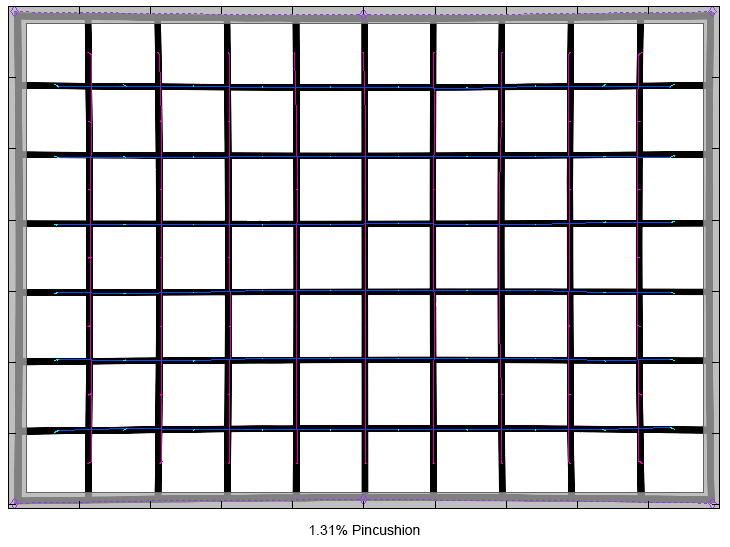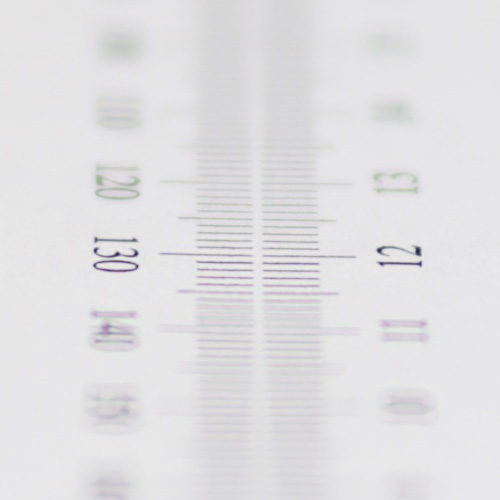|
Sigma AF 50mm f/1.4 DG HSM | A ("Art") (Nikon FX) - Review / Test Report - Analysis |
|
Lens Reviews -
Nikon / Nikkor (full format)
|
|
Page 2 of 3

Distortion
The Sigma produces some pincushion distortion. However, the distortion happens mainly at the image corners, most of the image field is actually free of distortion. So, if you plan to shoot a subject with straight lines near the image corners, consider to step back a little to avoid post-processing work.

Vignetting
The amount of vignetting is fairly moderate with a light falloff of below 1.5 EV (f-stops) at max. aperture. Stopping down to f/2 resolves most of the issue and it's essentially irrelevant from f/2.8 onward.
We're performing our vignetting analysis based on
(uncorrected) JPEGs straight from the camera. The JPG engine of the Nikon D3x features a rather flat
gradation curve, thus has a moderate contrast characteristic, resulting in comparatively low vignetting figures - the
corresponding Canon figures are roughly 40% higher due to the more
aggressive default contrast setting.

MTF (resolution)
The Sigma lens certainly fulfills the high expectations in terms of resolution. The center resolution is already very good at the maximum aperture setting, with very good borders and good corners.
By stopping down, the center resolution increases to excellent figures at f/2 already, the borders and corners follow a bit behind, but also reach excellent resolution at f/4. So, the peak performance is reached between f/4-f/8 with excellent quality across the image frame.
Please note that the MTF results are not directly comparable across the different systems!
Below is a simplified summary of the formal findings. The chart shows line widths
per picture height (LW/PH) which can be taken as a measure for sharpness.
If you want to know more about the MTF50 figures you may check out the corresponding
Imatest Explanations

Chromatic Aberrations (CAs)
Chromatic aberrations (color shadows at harsh contrast transitions) are very well controlled and show only small values of below 0.3 pixels at the image borders.

Bokeh
One of the primary usage scenarios for a large aperture lens is to separate the main subject from the background. In such an image the quality of the bokeh (out-of-focus blur) is of major significance.
The quality of the general blur is a bit of a mixed bag. In the image foreground the bokeh is comparatively harsh with fairly distinctive contrast edges. The more critical background is, however, pretty smooth albeit not totally perfect.
Out-of-focus highlights are very evenly rendered with no outlining effect. This is almost as good as it gets here. The more edgy aperture shape starts to show up at f/2.8. Normally the shape of the highlights deteriorate to the image corners. While the discs deteriorate very slightly towards an ellipsoid shape, this is a magnitude less compared to an "average" 50mm lens.

Bokeh Fringing
Bokeh fringing (non-coinciding focal planes of the various colors) is a common issue with relatively fast glass. As you can notice below the halos have different colors - magenta (red + blue) in front of the focus point and green beyond. Unlike lateral lateral CAs, bokeh fringing can not easily be fixed in post processing.
Just like most other lenses in this class, the Sigma shows some bokeh fringing at f/1.4. As usual, stopping down reduces the issue.
In addition, these shots also illustrate that there is a slight amount of focus shift when stopping down.
|
Move the mouse cursor over the f-stop marks below to observe the respective LoCAs
|
| f/1.4 |
f/2 |
f/2.8 |
f/4 |
f/5.6 |
|

|
|